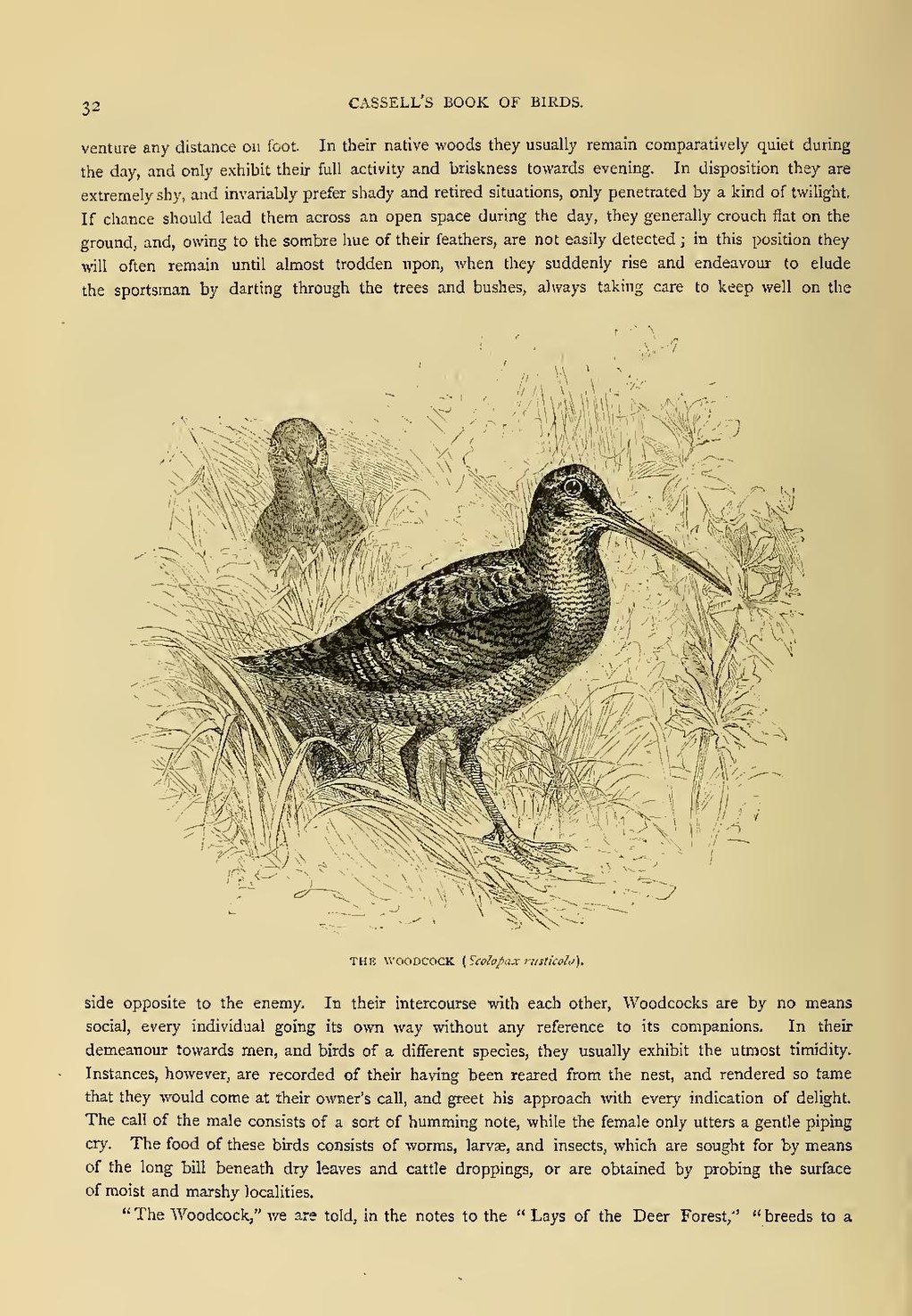venture any distance on foot. In their native woods they usually remain comparatively quiet during the day, and only exhibit their full activity and briskness towards evening. In disposition they are extremely shy, and invariably prefer shady and retired situations, only penetrated by a kind of twilight. If chance should lead them across an open space during the day, they generally crouch flat on the ground, and, owing to the sombre hue of their feathers, are not easily detected; in this position they will often remain until almost trodden upon, when they suddenly rise and endeavour to elude the sportsman by darting through the trees and bushes, always taking care to keep well on the side opposite to the enemy. In their intercourse with each other, Woodcocks are by no means social, every individual going its own way without any reference to its companions. In their demeanour towards men, and birds of a different species, they usually exhibit the utmost timidity. Instances, however, are recorded of their having been reared from the nest, and rendered so tame that they would come at their owner's call, and greet his approach with every indication of delight. The call of the male consists of a sort of humming note, while the female only utters a gentle piping cry. The food of these birds consists of worms, larvæ, and insects, which are sought for by means of the long bill beneath dry leaves and cattle droppings, or are obtained by probing the surface of moist and marshy localities.
An image should appear at this position in the text. To use the entire page scan as a placeholder, edit this page and replace "{{missing image}}" with "{{raw image|Cassell's book of birds (IA cassellsbookofbi04breh).pdf/50}}". Otherwise, if you are able to provide the image then please do so. For guidance, see Wikisource:Image guidelines and Help:Adding images. |
THE WOODCOCK (Scolopax rusticola).
"The Woodcock," we are told, in the notes to the "Lays of the Deer Forest," "breeds to a
